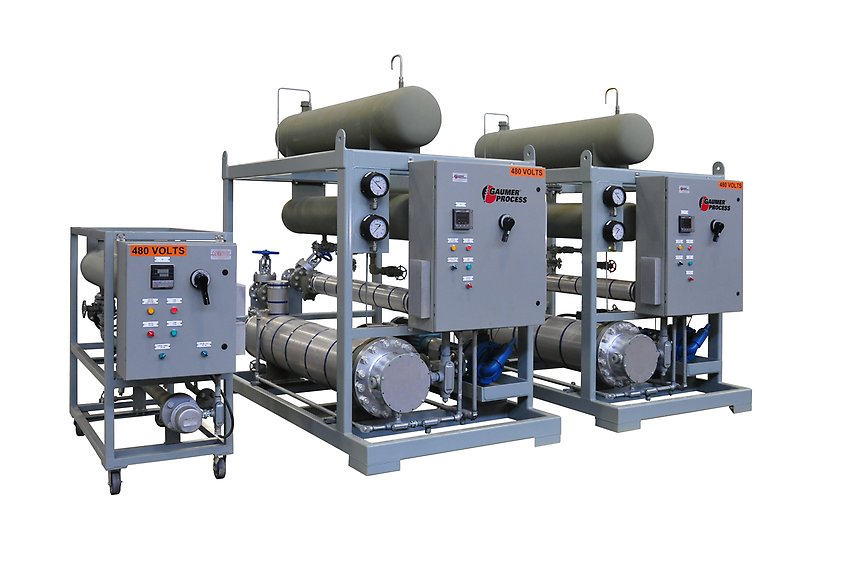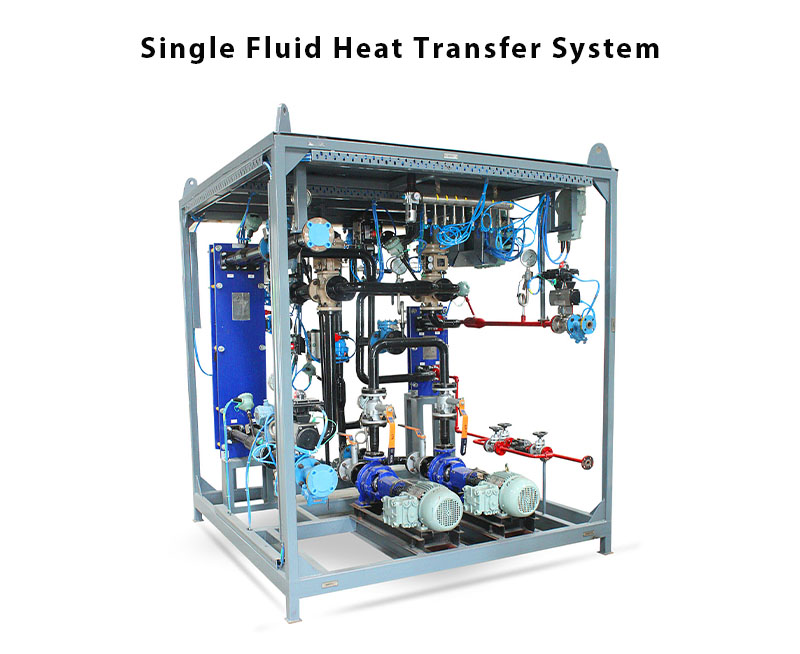A Comprehensive Guide to Picking the Right Heat Transfer Systems for Your Needs
Selecting the proper Heat transfer system is essential for operational effectiveness. Numerous systems provide to different demands, affected by variables such as temperature level range and fluid kind. Understanding the concepts behind Heat transfer, such as radiation, conduction, and convection, is vital. Furthermore, assessing energy resources and maintenance practices can influence lasting efficiency. A closer examination of these factors to consider exposes exactly how to customize a system to details demands. What should one prioritize in this facility decision-making process?
Recognizing Heat Transfer: Key Principles and Concepts
Although Heat transfer may feel like a simple concept, it includes a variety of concepts that are basic for effective system layout. Recognizing these principles is crucial for engineers and designers that intend to optimize thermal performance in different applications. Conduction, for example, involves the transfer of Heat through strong products, while convection describes the activity of Heat within liquids. Radiation, an additional essential principle, describes just how Heat can be moved with electro-magnetic waves. Each of these systems plays an important role in identifying exactly how energy moves within a system. By completely comprehending these ideas, professionals can make informed choices, making certain that Heat transfer systems operate efficiently and fulfill the details demands of their applications
Types of Heat Transfer Solutions: A Review
Recognizing the concepts of Heat transfer prepares for discovering the numerous kinds of Heat transfer systems readily available. Heat transfer systems can be categorized largely into three kinds: transmission, radiation, and convection. Conduction involves Heat transfer via strong materials, depending on direct call between fragments. Convection, on the various other hand, occurs in fluids (gases and fluids) where the motion of the liquid itself promotes Heat transfer. Radiation involves the transfer of Heat with electro-magnetic waves and does not need a tool, enabling it to take place in a vacuum cleaner. Each kind of system has distinctive qualities and applications, making it vital for individuals and companies to meticulously analyze their certain requirements when choosing one of the most suitable Heat transfer remedy.
Applications of Heat Transfer Solutions in Numerous Industries
Heat transfer systems play an essential duty across numerous sectors, influencing effectiveness and item quality. In commercial manufacturing processes, they help with exact temperature control, while in food and drink handling, they assure safety and preservation. Furthermore, cooling and heating and environment control systems depend heavily on reliable Heat transfer to maintain comfy settings.
Industrial Production Processes

Various industrial manufacturing procedures count greatly on efficient Heat transfer systems to optimize performance and enhance item quality. In markets such as metalworking, Heat exchangers play an important role in preserving perfect temperature levels throughout welding, spreading, and forging. These systems assure uniform Heat circulation, which is essential for accomplishing desired product residential properties. Likewise, in the chemical manufacturing market, Heat transfer systems promote accurate temperature level control during responses, impacting return and safety and security. In textile production, effective Heat monitoring is important for coloring and ending up procedures, affecting color consistency and textile top quality. By picking suitable Heat transfer modern technologies, makers can boost energy efficiency and lower functional costs, inevitably leading to a much more sustainable and competitive production environment.
Food and Drink Processing
Efficient Heat transfer systems are equally essential in the food and beverage handling industry, where keeping suitable temperatures is essential for food safety and top quality. These systems play an important function in procedures such as sterilization, food preparation, and pasteurization, guaranteeing that items are risk-free for consumption and preserve their nutritional worth. Heat exchangers, as an example, successfully transfer Heat in between fluids, optimizing power usage while reducing temperature fluctuations. Furthermore, refrigeration systems are basic for maintaining perishable things and extending rack life. The choice of Heat transfer technology directly influences functional efficiency and item stability, making it necessary for food and drink manufacturers to select the suitable systems tailored to their particular handling demands. This cautious selection eventually adds to customer contentment and food security.

A/c and Climate Control
While several markets depend on Heat transfer systems for performance, HEATING AND COOLING (Home Heating, Ventilation, and Air Conditioning) plays an essential role in keeping indoor climate control throughout various setups. These systems utilize Heat transfer concepts to control temperature, humidity, and air quality, ensuring comfort and security in residential, commercial, and industrial environments. Properly created a/c systems enhance power performance, reduce operational costs, and lessen environmental effect. In business buildings, for instance, reliable climate control adds to worker efficiency and consumer complete satisfaction. In industrial applications, a/c systems help preserve ideal conditions for devices procedure and item conservation. Picking the appropriate Heat transfer system is important for meeting certain environment control demands and accomplishing overall system my website performance.
Assessing Power Resources for Heat Transfer Systems
In assessing energy sources for Heat transfer systems, a contrast of sustainable power choices and fossil fuel considerations is vital. Eco-friendly resources, such as solar and wind, deal sustainable alternatives that can reduce ecological effect. On the other hand, fossil fuels stay widespread as a result of their established framework and power thickness, triggering a cautious assessment of both alternatives.
Renewable Resource Options

Fossil Gas Factors To Consider
Evaluating fossil fuel factors to consider is important for the effectiveness and sustainability of Heat transfer systems. Nonrenewable fuel sources, such as natural gas, oil, and coal, are traditional power sources that give considerable Heat outcome, making them prominent choices for commercial and residential applications. However, their ecological effect, consisting of greenhouse gas exhausts and resource depletion, elevates worries. When selecting a warm transfer system, it is essential to analyze the accessibility, price, and regulatory aspects related to these fuels. Furthermore, the performance of fossil fuel systems need to be taken into consideration, as higher efficiency can minimize some environmental disadvantages. Ultimately, a well balanced strategy considering performance and sustainability can direct decision-makers toward the most appropriate Heat transfer service for their certain needs.
Elements to Take Into Consideration When Choosing a Heat Transfer System
Picking a suitable Heat transfer system requires mindful consideration of various elements that can significantly impact effectiveness and performance. One essential element is the operating temperature variety, which determines the products and layout suitable for the application. Furthermore, the type of fluid used in the system-- whether gas or liquid-- impacts Heat transfer effectiveness and compatibility. The system's size and capacity must align with the particular demands of the procedure to prevent ineffectiveness. Energy source availability is also necessary, affecting operating expense and sustainability. The installment atmosphere, including space constraints and ease of access for maintenance, plays a substantial duty in system choice. Regulatory compliance and safety and security requirements must be considered to ensure the system satisfies all legal needs.
Maintenance and Performance Optimization for Heat Transfer Systems
Preserving Heat transfer systems is necessary for making certain maximum effectiveness and long life. Routine maintenance tasks, such as cleaning Heat exchangers and checking insulation, assistance avoid performance losses because of fouling and thermal bridging. Furthermore, keeping track of system criteria, consisting of pressure and temperature, enables very early detection of anomalies, decreasing downtime and pricey repair services. Implementing a precautionary upkeep routine can enhance efficiency and extend the life expectancy of parts. Updating to sophisticated control systems can boost functional effectiveness by readjusting to varying tons and problems. By focusing on maintenance and effectiveness optimization, operators can achieve reduced power intake, lower operational expenses, and enhanced general system integrity, eventually causing much better source application and an extra lasting procedure.
Future Patterns in Heat Transfer Technologies
As sectors increasingly focus on sustainability and energy performance, future patterns in Heat transfer innovations are readied to undertake significant makeovers. Innovations such as sophisticated products, including carbon nanotubes and nanofluids, assure boosted thermal conductivity and effectiveness. Additionally, the combination of renewable resource sources right into Heat transfer systems is gaining momentum, advertising environment-friendly services. Smart technologies, consisting of IoT sensors, are anticipated to change monitoring and control, allowing real-time data analysis for optimized efficiency. Moreover, the advancement of portable and modular systems will assist in less complicated setup and upkeep, dealing with diverse applications. These innovations indicate a change towards more lasting, reliable, and adaptable Heat transfer solutions, straightening with worldwide energy objectives and environmental standards.
Frequently Asked Inquiries
What Are the Environmental Effects of Heat Transfer Systems?
The environmental impacts of Heat transfer systems can include greenhouse gas exhausts, power consumption, and prospective thermal air pollution. Additionally, incorrect disposal of products and inefficiencies can add to resource depletion and ecosystem you could check here interruption.
Just how Do I Calculate the Cost-Effectiveness of a Warm Transfer System?
To calculate the cost-effectiveness of a warm transfer system, one have to assess initial expenses, functional costs, maintenance demands, and power performance, comparing these elements against the anticipated life-span and efficiency of the system.
Can Heat Transfer Equipment Be Used in Residential Settings?
Heat transfer systems can without a doubt be made use of in domestic setups. They provide effective home heating and cooling down remedies, making homes much more comfy while potentially lowering energy prices. Their flexibility enables numerous applications in domestic settings.
What Security Regulations Put On Heat Transfer Solutions?
Security laws for Heat transfer systems generally consist of standards on maintenance, setup, and procedure. Conformity with neighborhood building ordinance, maker requirements, and market standards is vital to ensure efficient and safe system performance in numerous applications.
Just How Do Various Products Affect Heat Transfer Effectiveness?

Conduction, for instance, involves the transfer of Heat via solid products, while convection refers to the movement of Heat within fluids. Comprehending the concepts of Heat transfer lays the groundwork for exploring the different kinds of Heat transfer systems available. Heat exchangers, for circumstances, effectively move Heat in between fluids, enhancing power usage while lessening temperature fluctuations. In reviewing energy resources for Heat transfer systems, a contrast of sustainable power alternatives and fossil fuel factors to consider is important. Metals, such as copper and aluminum, conduct Heat successfully, whereas insulators like rubber and glass slow down Heat circulation.